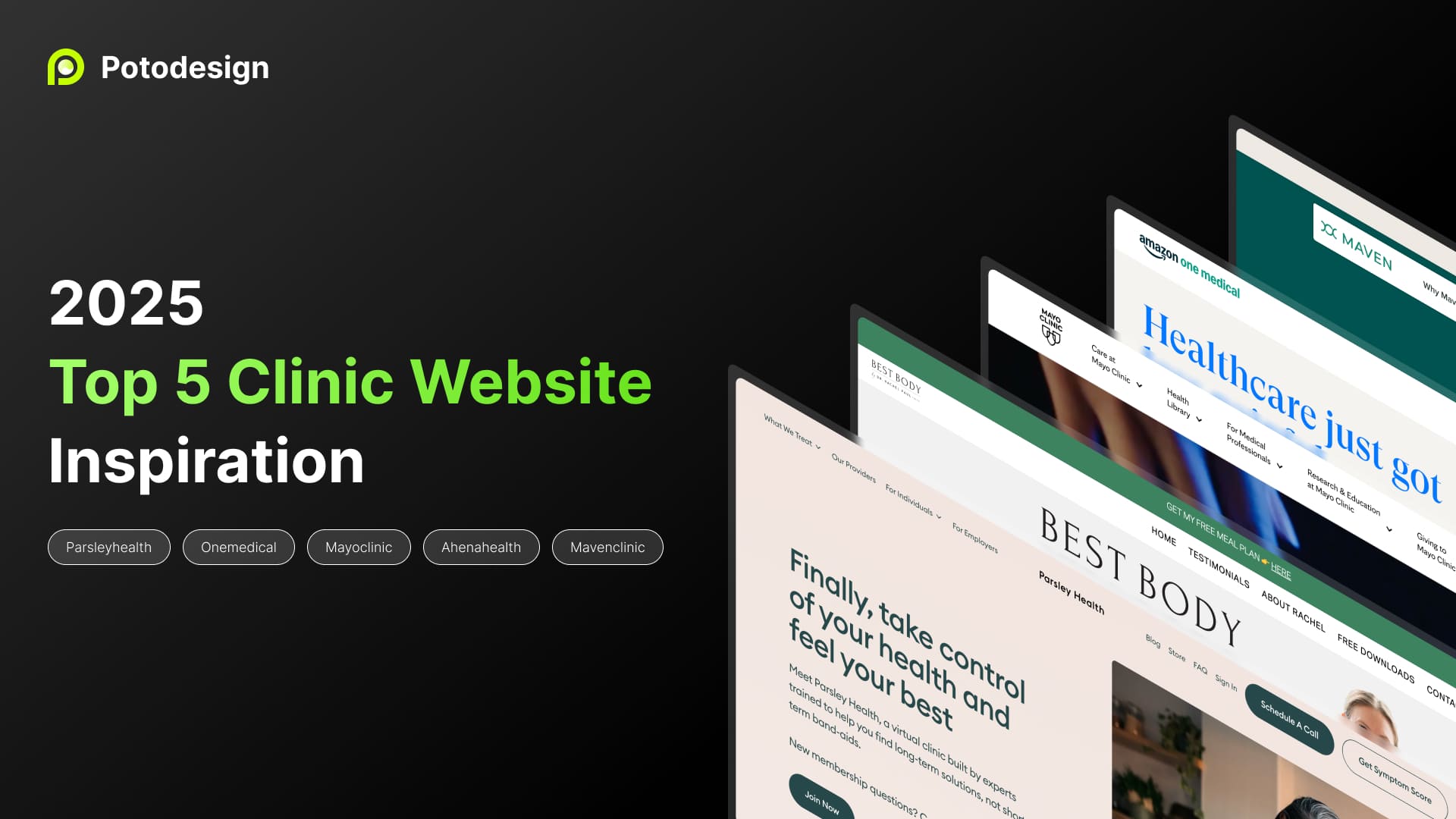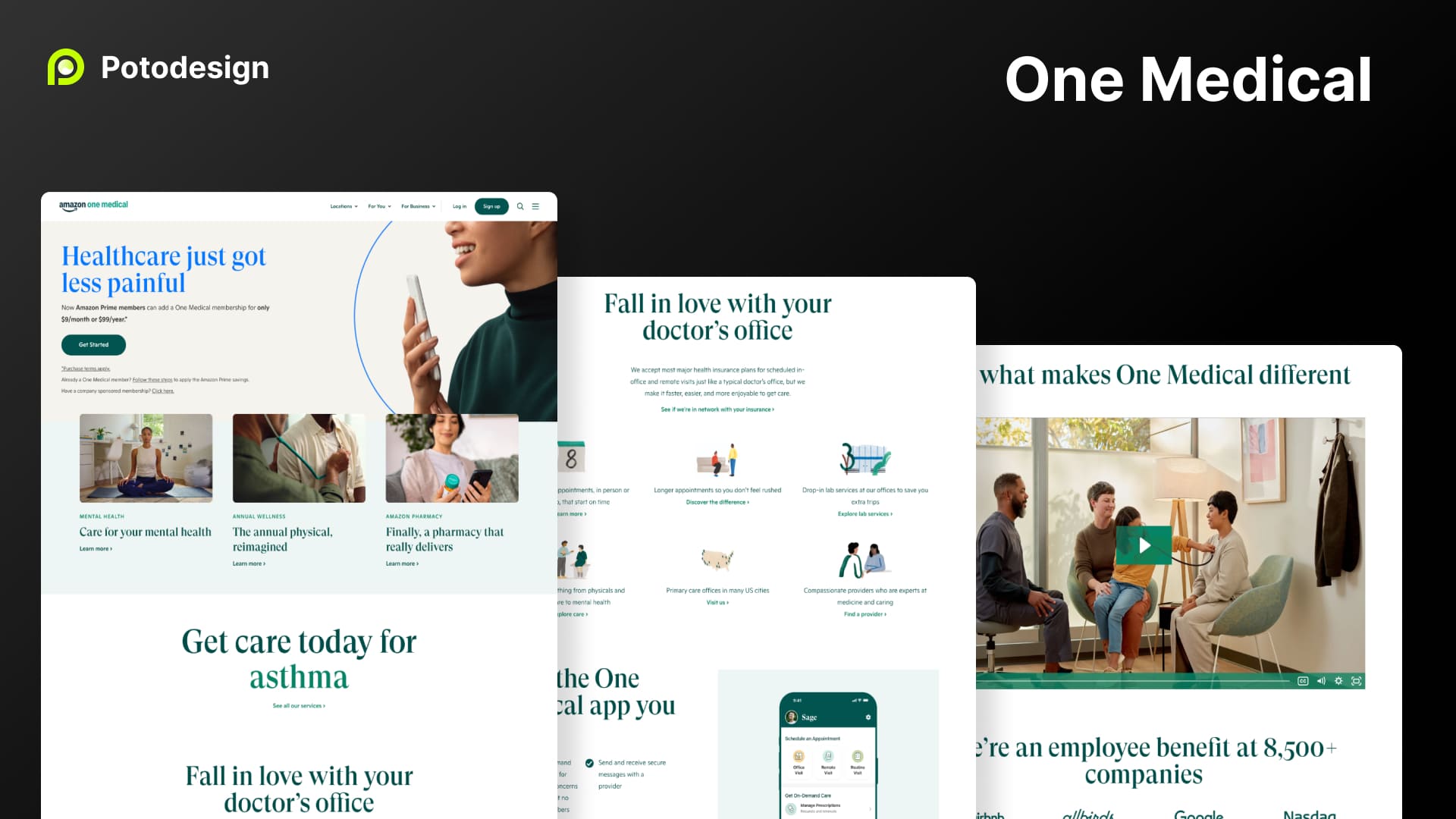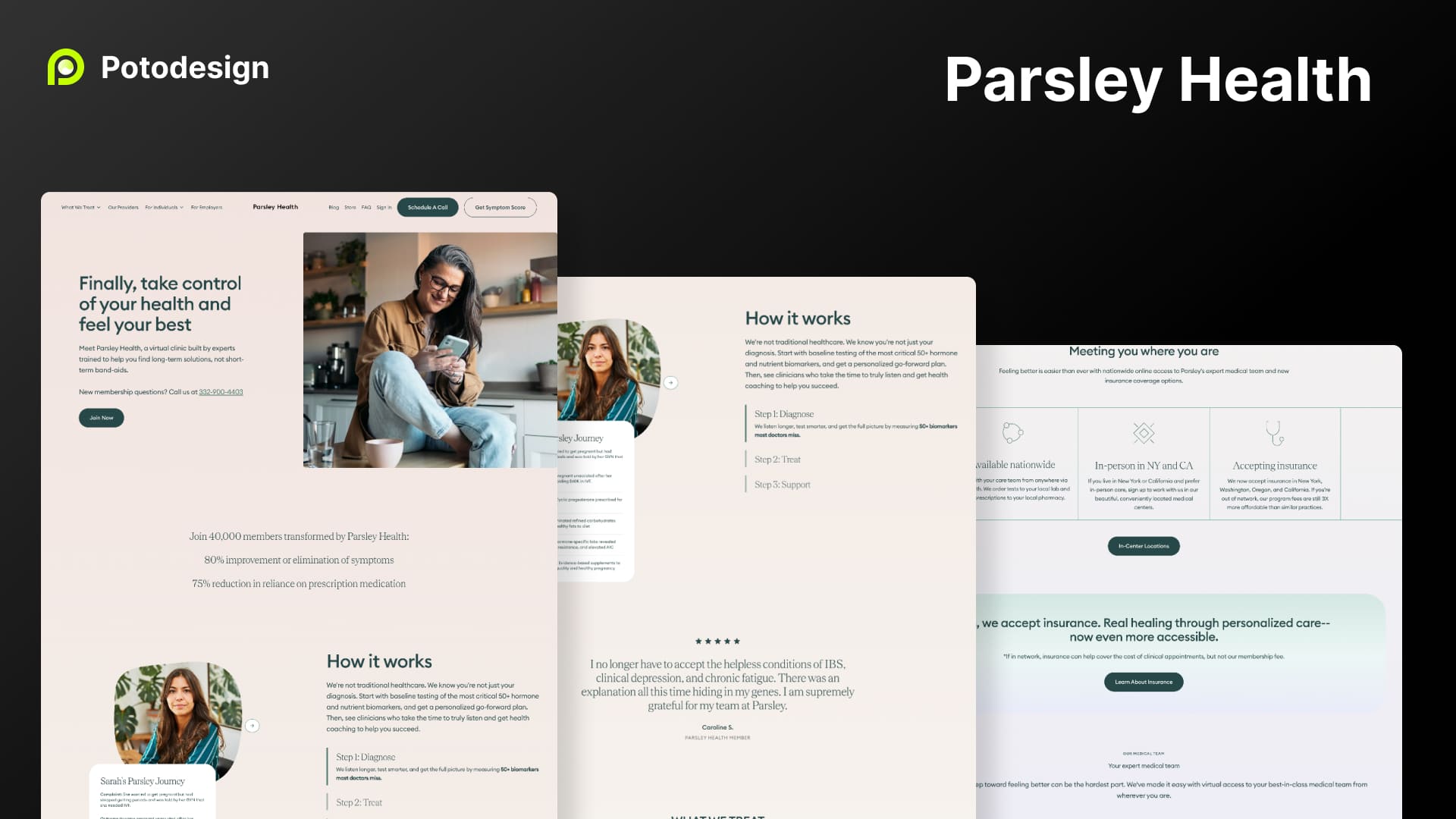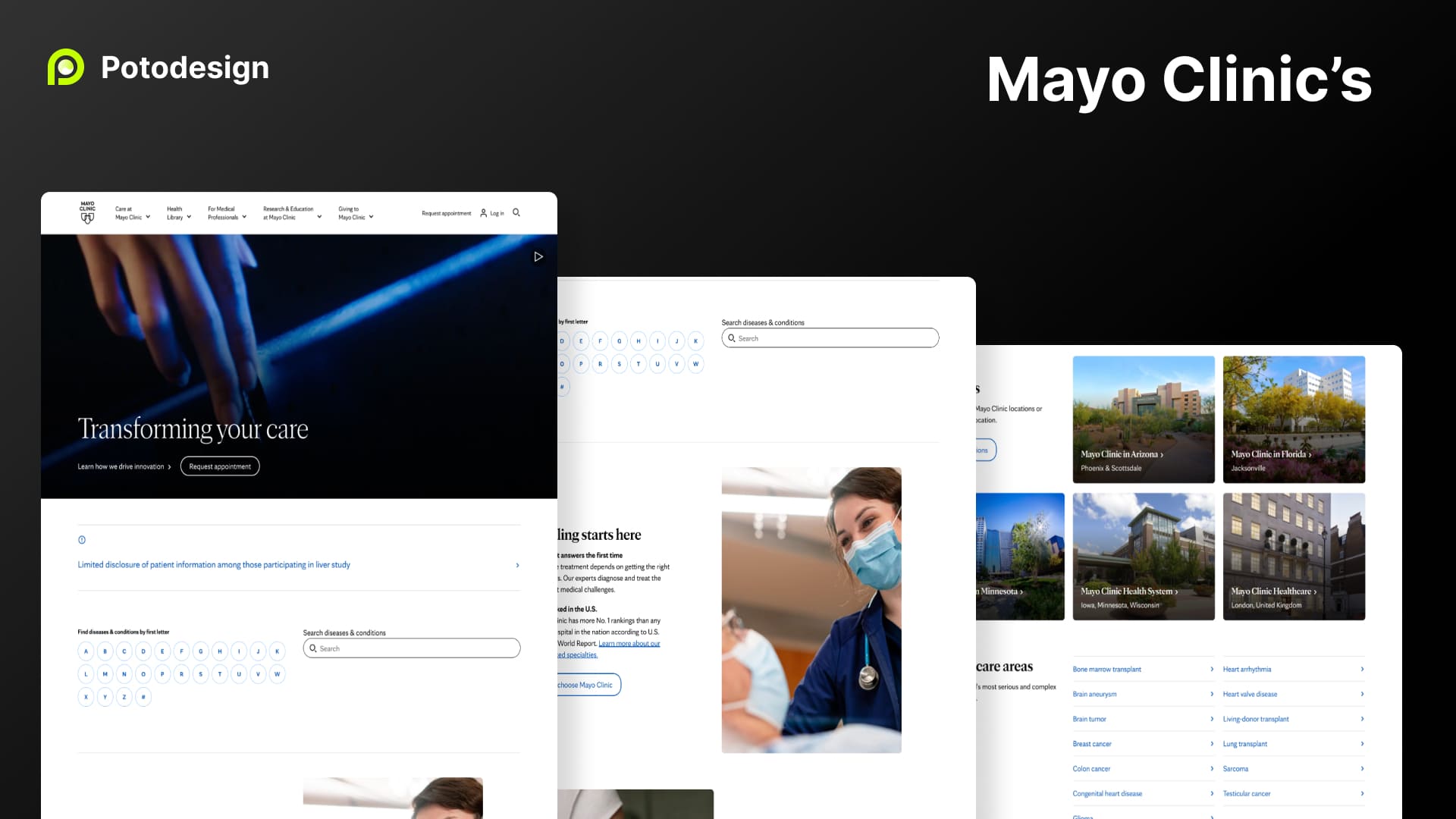Branding
2025 Clinic Website Inspiration: What Startups Can Learn from Top 5 clinic Website

At Potodesign, we dissected these five leaders to understand what makes their websites stand out.
Written By

Potodesign
Published on
July 2, 2025
Key Takeaways

One Medical's Website UX: A Masterclass in Patient-Centric Digital Healthcare Design
One Medical’s website is a prime example of how modern healthcare brands can create a seamless, trustworthy, and patient-first digital experience. From effortless appointment booking to personalized care pathways, the design emphasizes accessibility, calmness, and confidence.
The homepage clearly communicates benefits, while clean layouts and mobile responsiveness ensure ease of use across devices. Subtle animations, trustworthy language, and transparent pricing build credibility. For startups, it’s a model of how to combine empathy-driven UX with conversion-focused strategy resulting in a site that feels less like a hospital, and more like a wellness partner.
Blog List Value
- Frictionless Booking: Intuitive signup and appointment flow in under 2 minutes.
- Clear Value Proposition: Bold, benefit-driven copy (“Care that fits into real life”).
- Mobile Optimization: Fast, clean interface on all devices.
- Trust-Building Visuals: Real photography, member stories, and professional care teams.
- Streamlined Navigation: Clear paths for individual, family, or employer-based care.

Parsley Health’s Website: How Functional Medicine Meets Luxury Wellness in UX Design
Parsley Health’s website redefines digital healthcare with a sleek, lifestyle-driven approach. Positioned between clinical credibility and luxury wellness, it blends functional medicine with elegant design.
The interface leads users into a wellness journey inviting, calm, and guided by clarity. Thoughtful layouts, soft color palettes, and aspirational visuals make healthcare feel personal and premium. For startups, Parsley is a lesson in emotional branding and subscription-based digital service UX. It doesn’t just sell health plans. it sells a way of life. By fusing storytelling with conversion-driven design, Parsley shows how digital clinics can stand out in a saturated market.
Blog List Value:
- Lifestyle-Led Branding: Feels more like Goop than a clinic ideal for wellness-conscious users.
- Subscription UX Model: Clearly communicates monthly membership benefits, pricing, and digital care pathways.
- Soft Visual Design: Calm neutrals, serif typography, and whitespace create trust and serenity.
- Conversion-Driven CTAs: Sticky headers and minimal steps to sign up or book consults.
- Storytelling Through Content: Health journeys, doctor profiles, and wellness content build depth and retention.

Mayo Clinic’s Digital Strategy: How Simplicity, Authority, and Access Power the World's Most Trusted Medical Website
Mayo Clinic’s website is a benchmark in healthcare trust, usability, and educational depth. With over 34 million monthly visitors, it’s built to serve patients, professionals, and researchers alike.
Its design prioritizes clarity, symptom searchability, and structured navigation creating a frictionless experience for users under stress. The platform functions as a digital front desk, a research hub, and a patient education library all in one. For startups, Mayo Clinic’s site shows how credibility and user trust are built through consistent design systems, SEO-first content, and accessibility. It's a masterclass in how to balance institutional gravitas with modern digital expectations.
Conclusion
In 2025, healthcare websites have evolved beyond static listings. They are dynamic experiences designed to win trust, educate patients, and streamline journeys. Clinics like Parsleyhealth, OneMedical, Mayo Clinic, Athenahealth, and Maven Clinic exemplify modern best practices: from trust-centric design and frictionless booking flows to informative provider profiles and SEO-driven content hubs.
By integrating these elements, startups can better align with patient expectations: 72% of users trust a healthcare website that provides clear pricing and easy booking, and patients log 90% higher satisfaction when provider info is accessible and engaging. Reflect: Does your current UX help potential patients feel confident and informed, or does it build skepticism? If you refine just one element, homepage clarity or health education hub you could unlock significant improvements.
At Potodesign, we specialize in translating these high-level inspirations into affordable, scalable website solutions using Webflow, AIGC design, and a strategic UX process tailored for fintech and Web3 startups. With dozens of global clients, we know what works and how to build it fast.







